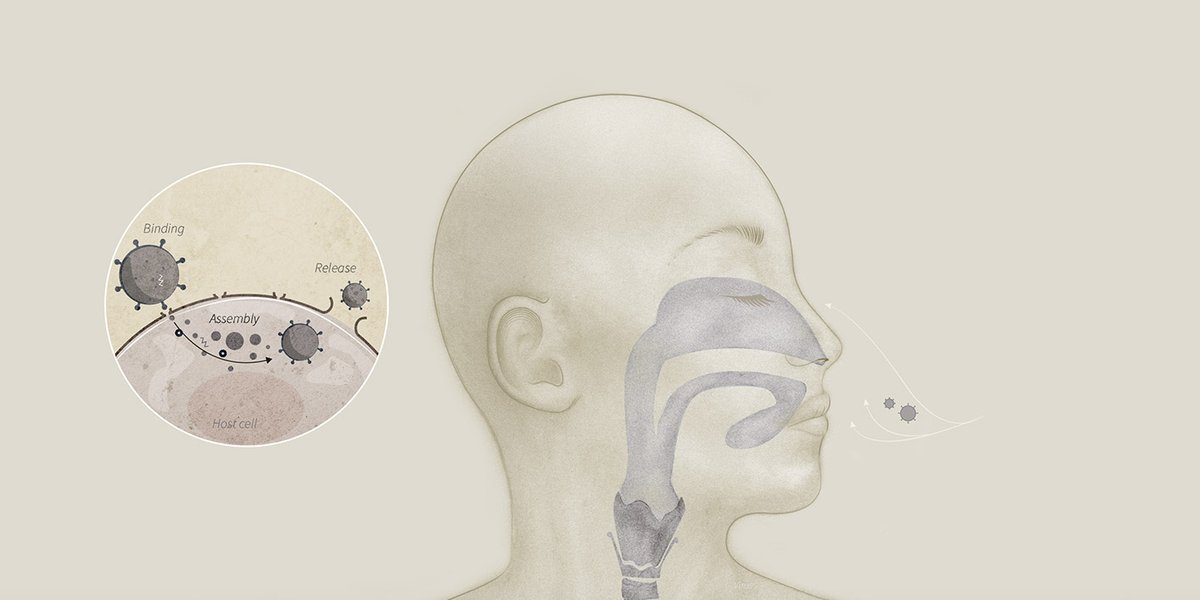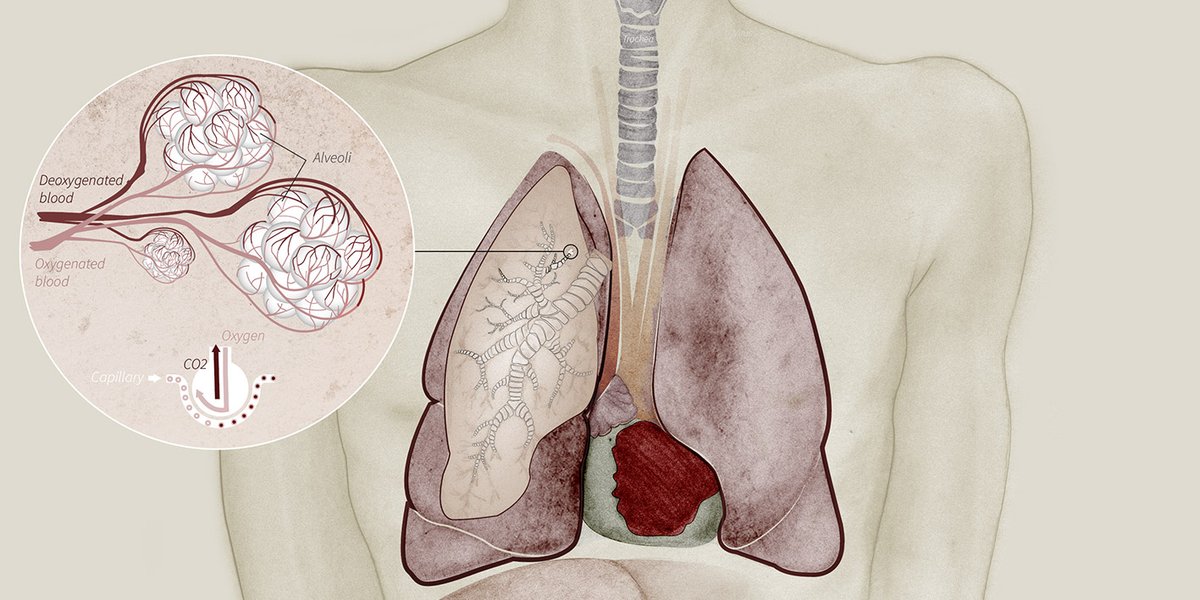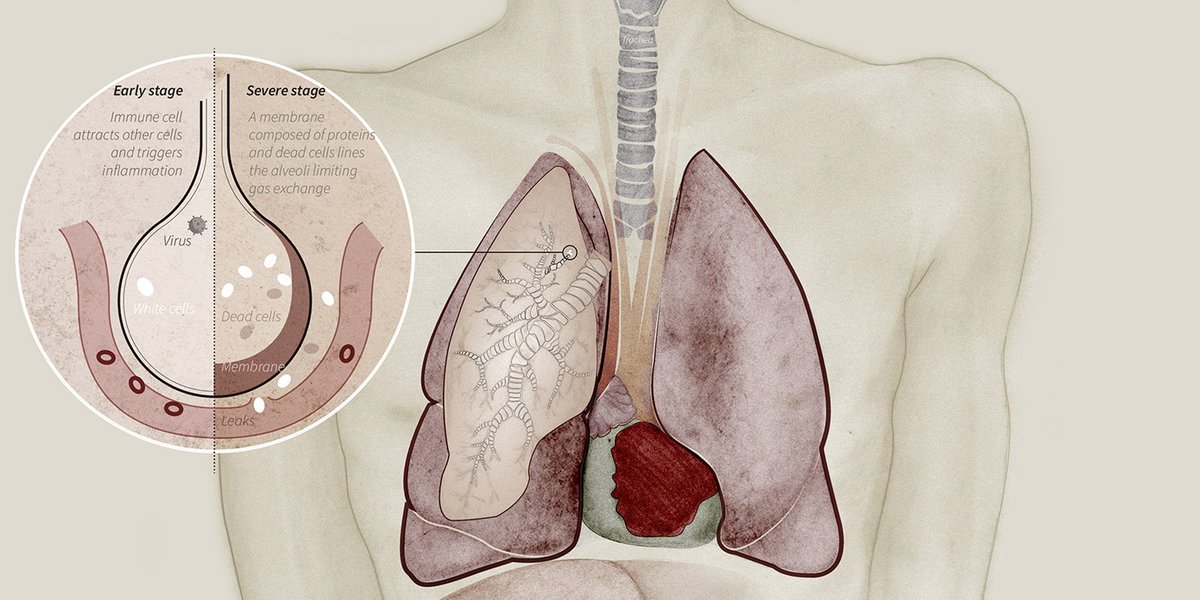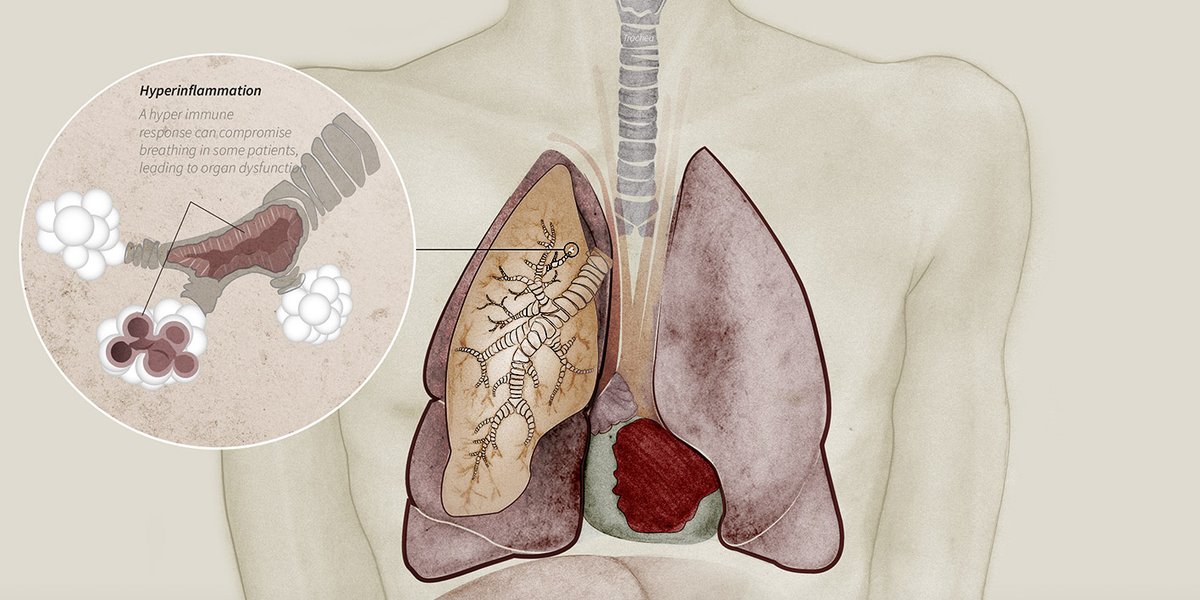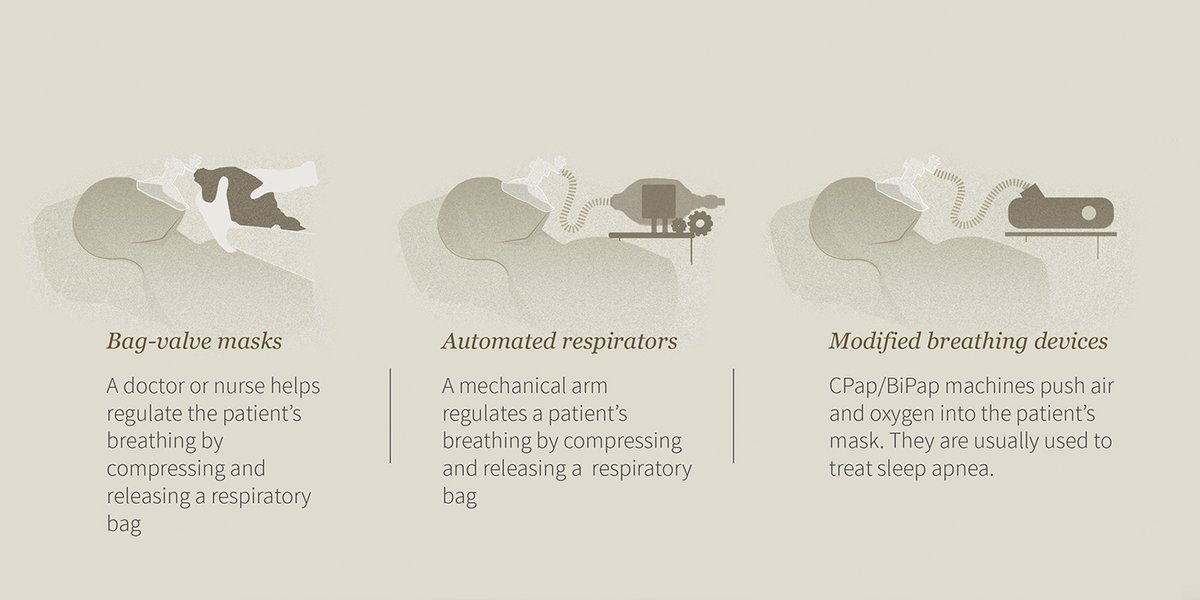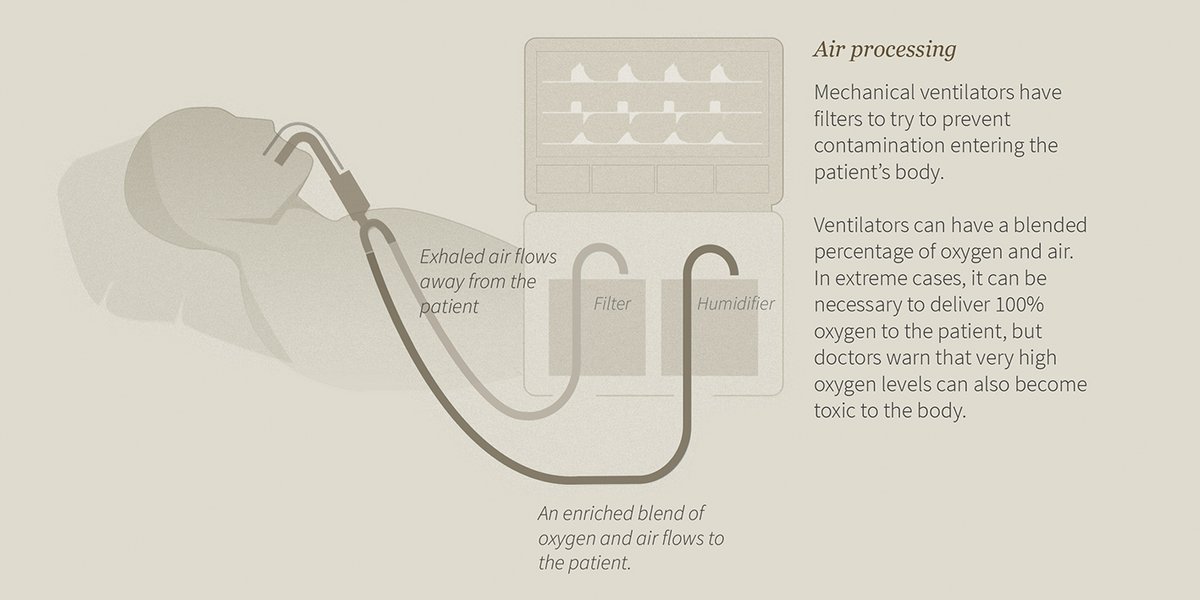Ventilators are in huge demand and short supply as a key medical tool to help combat the worst effects of coronavirus on the body. Here’s how COVID-19 affects patients and how ventilators can be a bridge between life and death, by Samuel Granados. https://graphics.reuters.com/HEALTH-CORONAVIRUS/VENTILATORS/oakvekyxvrd/index.html">https://graphics.reuters.com/HEALTH-CO...
The coronavirus binds to cells in the throat, airways and lungs, and hijacks those cell’s own replication process to multiply and infect neighbouring cells.
Down the windpipe and through bronchial tubes in the lung, the disease affects tiny air sacs called alveoli. The walls of the air sacs become damaged and inflamed, reducing the oxygen supply to the blood and leaving the patient struggling for breath.
As the damage to the capillaries and the alveoli mounts, the delivery of oxygen to the blood reduces and can develop into a condition known as Acute Respiratory Distress Syndrome in patients whose immune systems go into overdrive.
When a patient& #39;s immune system responds to COVID-19 by going into extreme overdrive, it can trigger a "cytokine storm" - which is when the body overproduces immune cells - causing dangerously high blood pressure, lung damage and organ failure.
Non-invasive ventilators can help patients who are still able to breathe on their own. These devices use face masks, nasal tubes or mouth pieces to push air, or a mixture of air and oxygen, into the lungs.
When patients can’t breathe on their own anymore, an invasive ventilator takes over the entire breathing process. Air and oxygen are delivered via a tube placed in the larynx or trachea.
Read the full story: https://graphics.reuters.com/HEALTH-CORONAVIRUS/VENTILATORS/oakvekyxvrd/index.html">https://graphics.reuters.com/HEALTH-CO...

 Read on Twitter
Read on Twitter